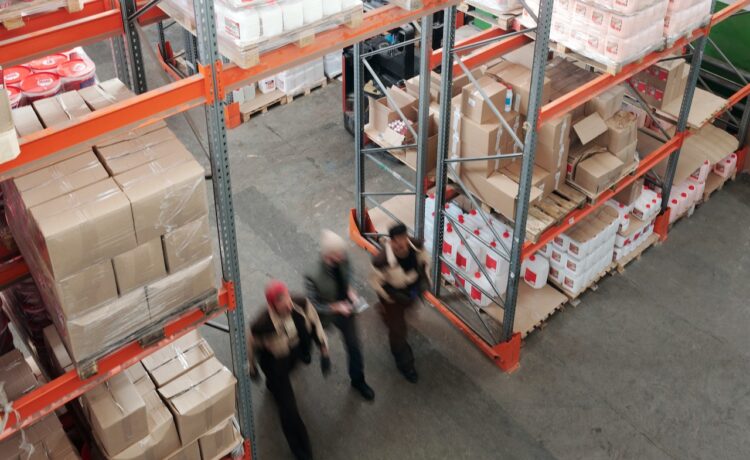The lifeblood of any supply chain, warehouses play an indispensable role in today’s complex business ecosystem. However, maintaining peak warehouse efficiency isn’t just a matter of course; it requires strategic planning and ongoing vigilance. Here are some critical tips to ensure your warehouse operations remain streamlined and agile.
Inventory Management
The core function of any warehouse is to efficiently store and manage inventory. Implementing an Inventory Management System (IMS) can offer real-time tracking of goods, from receipt to shipping, enabling better decision-making. Automated systems can also help predict inventory levels, alerting you when to reorder supplies, thereby preventing stockouts or overstocking.
Streamlined Receiving Process
The receiving dock is your first line of defence against inefficiency. A streamlined receiving process ensures that incoming deliveries are logged, inspected, and stocked without delay. Use handheld scanners for quicker documentation and immediate updates to the IMS. Delays here can create a bottleneck affecting all downstream activities.
Strategic Racking
The way you utilise space significantly affects warehouse efficiency. Employ a racking system tailored to your specific needs—whether it’s selective racking for quick access to pallets, or a high-density system for warehouses with limited space. Make sure to organise goods according to their turnover rate; high-turnover items should be readily accessible.
Lean Staffing
Having the right number of staff can be a fine balance. Overstaffing inflates operational costs, while understaffing can lead to delays and inefficiencies. Employ lean staffing models that can dynamically adjust to the flow of work, making it easier to scale the workforce up or down depending on demand.
Warehouse Layout
A well-planned warehouse layout optimises space and facilitates smooth workflow. Shorten travel times by setting up a U-shaped workflow: goods come in one side, move through the warehouse, and leave from the opposite side. Consider adding signs or floor markings to guide staff and improve navigation. Consider industrial flooring to improve your space.
Employ Automation
Automation isn’t merely for large operations. Even smaller warehouses can benefit from simple automated systems like conveyor belts or sortation systems. If your budget allows, look into robotics and automated storage and retrieval systems (AS/RS) for even greater efficiencies.
Training and Skills Development
Invest in your most valuable asset—your staff. Regular training sessions not only improve efficiency but also reduce the likelihood of accidents. Cross-train employees in various roles to create a more flexible workforce that can adapt to different tasks as needed.
Regular Audits and Reviews
Continuous improvement is crucial. Regular audits of operational procedures and key performance indicators (KPIs) can highlight areas for improvement. Get feedback from floor staff; they often have practical insights that can lead to significant efficiency gains.
Safety Measures
Inefficiency often stems from workplace accidents and injuries. Clear safety guidelines and robust training can drastically reduce these incidents, improving both efficiency and morale. Make sure all safety equipment, such as fire extinguishers and first aid kits, are easily accessible.
Reduce Touchpoints
Each time an item is handled or moved unnecessarily, it adds to the cost and time of operations. Analyse your workflow to identify and eliminate unnecessary touchpoints. This is particularly important in the picking process, where a reduction in touchpoints can lead to remarkable gains in efficiency.
Integrate Technology
Consider integrating more advanced technologies like Radio Frequency Identification (RFID) or even Internet of Things (IoT) sensors for real-time tracking and analytics. These technologies can offer granular insights into warehouse processes, which can then be optimised for maximum efficiency.
Emergency Preparedness
Last but not least, always have a contingency plan in place for unexpected disruptions, from equipment failure to natural disasters. A well-prepared warehouse can recover more quickly, thereby reducing downtime and the associated costs.
#Conclusion
A warehouse operating at peak efficiency is a boon to any business, reducing operational costs and boosting customer satisfaction. Given the complexity of modern warehousing, the path to efficiency involves a multi-faceted approach—automation, training, safety, and constant review, to name but a few.
Remember, there is always room for improvement. In an ever-evolving business landscape, your warehouse too must adapt and evolve to stay ahead of the curve.
It’s time to roll up your sleeves and dive into optimising your warehouse efficiency. Your future self will thank you for the effort.







